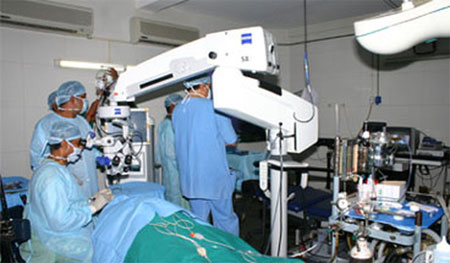SQUINT AND OCULOMOTOR DISORDERS
Ocular motility is tested when patients complain of double vision or if neurologic disease is suspected. A visual assessment of the eyes tests for deviations that resulting from strabismus, extraocular muscle dysfunction, or palsy of the cranial nerves innervating the extraocular muscles.
Saccadic dysfunction results in poor ability of the eyes to ‘jump’ from place to place. This will inhibit reading and other skills. This is tested by making the patient move his/ her eye quickly to targets at the far right, left, top and bottom.The ‘follow my finger’ test makes the patient follow the examiner’s finger as it traces an imaginary ‘double H’ which touches upon the eight fields of gaze. Inferior, superior, lateral and medial rectus muscles and the superior and inferior oblique muscles are tested.

Squint (Strabismus)
The eyes in a newborn are generally not aligned. Alignment is established only between 3-4 weeks. If misalignment persists in a baby over month old then it should be evaluated. This condition where the eyes are misaligned and the two eyes look out in different directions is called Squint or Strabismus. This can either be permanent or occasional with eyes straight at other times. It is common in children and may also occur in adults. It is caused by a lack of coordination between the six muscles that control the movement of each eye leading to misalignment. This may be the same in all directions or may be pronounced in one direction. This may be caused by refractive error, long sight or poor vision in one eye due to various eye diseases. In case of squint a thorough examination of the eyes is necessary especially in children. An ophthalmologist will establish the nature and cause of squint after evaluation and suggest corrective measures.
The treatment will revolve around
- Preservation or restoration of vision
- Straightening of the eyes
- Restoration of binocular vision
If there is a refractive error then that is treated first. If the squint ' is an Accommodative Squint this would be all that is required for correction. The eyes are checked for ambylopia and treated. The parents are involved in this procedure as their cooperation is vital for the success of the treatment. The squint is then treated surgically by strengthening or weakening the relevant muscles to restore balance and coordination.
It is essential to correct squint at an early age to avoid amblyopia. If it is not corrected by 10 years squint leads to ambylopia resulting in severe eye strain, headaches and abnormal head posture. Squint will never correct by itself. The earlier the treatment the better the result.
